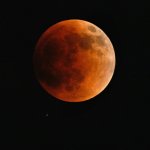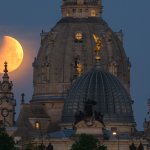A total lunar eclipse graced the night skies over the weekend, providing longer than usual thrills for stargazers across North and South America.
The celestial action unfolded Sunday night into early Monday morning, with the moon bathed in the reflected red and orange hues of Earth’s sunsets and sunrises for about 1 1/2 hours, one of the longest totalities of the decade. It was also the first so-called blood moon in a year.
Observers in the eastern half of North America and all of Central and South America had prime seats for the whole show, weather permitting. Partial stages of the eclipse were visible across Africa, Europe and the Middle East. Left out: Alaska, Asia and Australia.
NASA provided a livestream of the eclipse from various locations.
A total eclipse occurs when Earth passes directly between the moon and the sun, and casts a shadow on our constant, cosmic companion. The moon was 225,000 miles away at the peak of the eclipse — around midnight on the U.S. East Coast.
There’ll be another lengthy total lunar eclipse in November, with Africa and Europe lucking out again, but not the Americas. Then the next one isn’t until 2025.
Scroll down to see photos of the “blood moon” total lunar eclipse:

Peter Zay/Anadolu Agency via Getty Images This photo shows the “Blood Moon,” or a total lunar eclipse, in Charlotte, North Carolina, on May 15, 2022.

Robert Michael/picture alliance via Getty Images The moon sets in the morning during a partial lunar eclipse behind the Frauenkirche and the dome of the Kunstakedmie with the angel “Fama” in Saxony, Germany.

Ahmed Gomaa/Xinhua via Getty Images Photo taken on May 15, 2022 shows a full moon in the sky over Cairo, Egypt.

